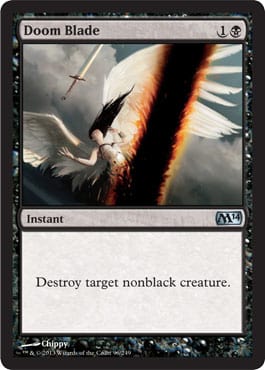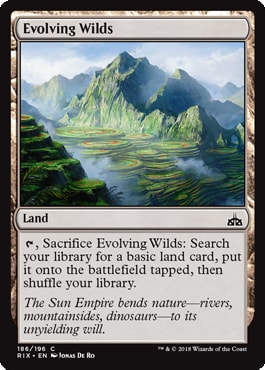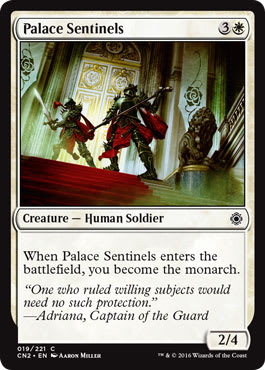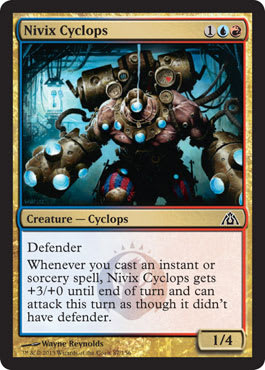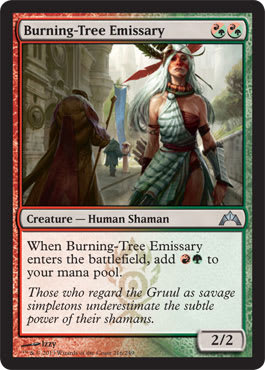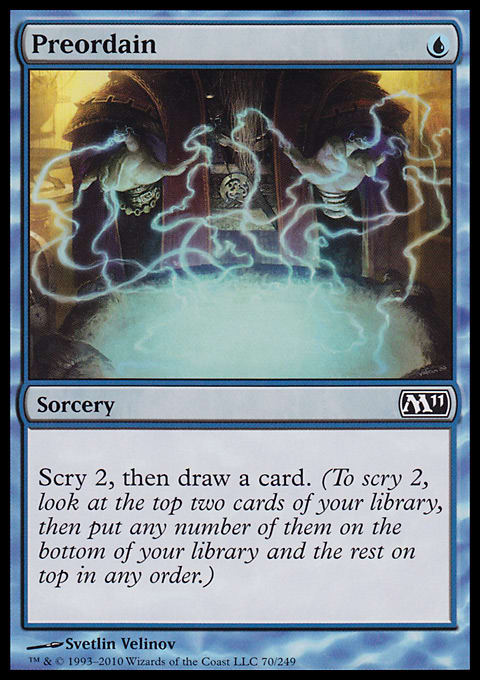The biggest learning curve when it comes to Pauper is realizing the true power buried in a format restricted to commons.
Foremost, what Pauper is not is decks full of throwaway draft chaff. Even though every new Standard release set will contain a few relatively powerful commons, in the context of a 25 year old game with over 80 expansions (I'm including Magic Online-only expansions since most of them have included very powerful rarity downgrades), new cards have to compete with a rich history of thousands and thousands of card choices.
The second misconception about the power of Pauper has to do with the value of removal. When I say "commons only", many expect that jamming 4 Doom Blades is the most powerful thing you can do. Now, I don't fault their misconception: it's very hard to think of a single Limited format where Doom Blade was not the default most powerful common in the set. But what ubiquitous, common two-mana removal does to Pauper is that it strongly disincentivizes playing creatures with an effective mana cost of three or greater since they so readily trade down with spot removal. The net effect is that nearly every true "threat" in Pauper has an effective mana cost of one or two, and the only creatures to see play that cost more than two are "value creatures" whose ability adds at least the value of a second card.
The last misconception I commonly see about Pauper is that you can really do anything: if the power level of Pauper is low enough, then it should be a brewer's paradise. If we're only playing commons, shouldn't the power level of the format be flat enough that most of the skill should be in our creativity, deck construction, and our own dynamic play? I'm afraid to say that this is just not true. Though Pauper does go through innovations, there is definitely an established metagame based on the indisputable power of individual cards and synergies.
So, as a five-year Pauper veteran, here is my countdown of the five most powerful things you can do in Pauper:
5. Use all your available mana every turn
In the absence of true dual lands or shocklands, every two or more color deck pays a mana price to fix for their colored mana. To get access to two colors, either we are playing the Khans of Tarkir gainlands that come into play tapped but give us back one life, we're playing cards like Evolving Wilds that find the specific basic we want but fetch it into play tapped, or we're playing Ash Barrens which costs one generic mana to search for the right basic. We could also be playing the Ravnica bouncelands that not only fix for colors but give us two mana on one land. But like all other Pauper fixing choices, these too come into play tapped and they also require a land to return to hand.
The result of this real mana cost to fix for two or more colors is that two or more color decks in Pauper pay a significant cost in the development phase. In light of this cost, decks that only run one color and can afford to play all basics have a huge tempo boon. Basic Island, Mountain, and Forest are all very viable and powerful lands in Pauper when they are used to fuel efficient and powerful single color decks like Mono-Blue Delver, Burn, Red Deck Wins, Stompy, and Elves. If I play an untapped land every turn on Turns 1-4, I have access to ten colored mana. The player who most efficiently spends the most mana on these critical turns of the game, I believe, is the player who has the best chance of winning.
4. Become the Monarch
The most relevant impact that Conspiracy: Take The Crown had on the Magic: The Gathering world was a little friend added to eternal formats named Leovold, Emissary of Trest . . . but a close number two was adding the Monarch mechanic to Pauper.
There is nothing evenly remotely close to the power level of the repeated, passive card draw enabled by becoming the Monarch. It's like having a personal Howling Mine, a painless Phyrexian Arena, or to cite another powerful Conspiracy card, a Coercive Portal downshifted to common. And unlike all three of these other cards, removing the permanent that enables the extra card per turn does nothing! Kill my Palace Sentinels? I care not, as I am Monarch!
The one caveat about Monarch is it can be devastating to lose the crown. This possibility can be especially dangerous in matchups like Izzet Delver where a flash creature like Spellstutter Sprite can surprise ruin your day. So, learn to protect that crown even if it means waiting to play your Monarch card onto an empty board or holding back your own attackers lest your opponent steal your crown from you for good.
Decks built around Monarch are generally midrange decks that seek to clear the opponent's board, drop a Palace Sentinels or Thorn of the Black Rose and then hold onto that crown however possible. Good compliments to the Monarch mechanic include spot removal, sweepers like a Crypt Rats or Pestilence, damage prevention like Prismatic Strands and value engines like recurring Prophetic Prism.
3. Do "Unfair" things
The term "Unfair" in Magic refers to when a combination of cards allows for an action that fundamentally breaks the development of the game. In Legacy or Cube, if I play Sneak Attack and flash in an Emrakul, the Aeons Torn with haste, attack for 15 and wipe out all your permanents, there is a very very good chance I will win that game. And that sequence only costs ![]()
![]() to play the enchantment,
to play the enchantment, ![]() to activate, and the necessity of having the notorious flying spaghetti monster already in your hand.
to activate, and the necessity of having the notorious flying spaghetti monster already in your hand.
Pauper definitely has its share of unfair strategies.
The one that closest resembles a deck from another format is Bogles, revolving around the namesake Slippery Bogle, along with two other hexproof friends, Gladecover Scout and Silhana Ledgewalker. Start with a hexproof 1/1, outift with ants and a jacket, I mean, a pile of cheap auras, and swing away! Swap Daybreak Coronet for Ancestral Mask and it's almost the same deck!
Another tried and true unfair strategy in Pauper revolves around the spells-matters cards Kiln Fiend and Nivix Cyclops. The goal of this strategy is to play many spells in one turn with one of our spells-matters monsters in play, concluding with the Red Pauper variant of Berserk, Temur Battle Rage, as its big finisher. This deck can routinely win on Turns 3-4 left unchecked.
But the current most popular unfair strategy in Pauper revolves around the innocuous Odyssey common Tireless Tribe. While discarding cards to increase its toughness by 4 at a time doesn't seem powerful, when combined with the power-toughness swapping instant Inside Out, the Tireless Tribe deck can set up a turn where it discards its hand to one-shot the opponent for 21 damage!
The main competitive advantage of these unfair decks is that the opponent must have a specific answer in their hand in a small window of time or you will win the game. So if you can catch a string of opponents who are unprepared for your combo, you can spike a 5-0 league easily!
2. Cheat on mana
The mana system is designed as a safeguard for Magic: The Gathering to not only prevent a player from playing all the most powerful cards in one deck but also to restrict the power level of cards each player can deploy on various turns of the game. So when a deck is able to break this fundamental development safeguard, it gains a massive advantage.
There are three ways in Pauper that we break the rules of mana development: Ramp, Cost Reduction, and land synergy.
Ramp refers to playing cards that generate additional mana, like Llanowar Elves. If we spend the early turns of the game adding extra mana sources to our battlefield, then we can play a greater number of and more powerful cards faster. The most common example of this strategy is Pauper Elves, a deck full of mana producers that not only let you play out your hand of creatures quickly but also refill it with powerful card draw spells like Lead the Stampede and Distant Melody.
Cost Reduction refers to cards that cast for less than their stated mana cost because of a met condition. The most powerful cost reduction mechanic in Pauper is "Affinity for Artfifacts". With a complement of the Mirrodin Artifact Lands like Seat of the Synod and 1 mana "cogs" like Chromatic Star, it is possible to reduce the cost of Affinity cards like 4-CMC Frogmite and 7-CMC Myr Enforcer down to one or even zero!
Few decks bedsides Affinity can boast being able to play 8 power of creatures by Turn-3. But one more cost reduction card that make this happen is the ![]()
![]() hybrid creature Burning-Tree Emissary. Thanks to giving the caster a free
hybrid creature Burning-Tree Emissary. Thanks to giving the caster a free ![]()
![]() on its resolution, this Modern Masters 2017 downgrade has powered up Stompy and Red Deck Wins to win by cheating on mana like never before.
on its resolution, this Modern Masters 2017 downgrade has powered up Stompy and Red Deck Wins to win by cheating on mana like never before.
Finally, the biggest way to cheat on mana is via land synergy. While Pauper was once plagued by big mana decks powered by the Loci lands Cloudpost and Glimmerpost, today the biggest mana decks in Pauper all revolve around the three card land synergy of the UrzaTron: Urza's Power Plant, Urza's Mine, and Urza's Tower. Being able to jump in mana production from one to two to 7 mana on Turn-3 is so powerful that it is worth great deck construction restrictions to assemble these three lands, including playing cards like Expedition Map solely to find missing lands and adding Prophetic Prism just to convert all that colorless mana into colored mana for spells.
These days, the premier control decks involving the UrzaTron use the library, graveyard, excess mana generation, and even their life total as resources so they can win the game from full control once they have positioned themselves into a point of inevitability.
And #1 . . . Cast Preordain
I am convinced that Preordain is the single most powerful card in Pauper. More copies of Preordain get played in Pauper than any other card. And the sheer number and variety of decks that run the little cantrip is both staggering and evidence of its effectiveness.
While trading a Blue mana to look at the top two cards of your library and then decide whether or not you wish to keep one or both of them, or rearrange them, doesn't sound like a format-breaking spell, the secret power of Preordain, and its cantrip cousins Ponder and Brainstorm, is it not only enables you to fix a weak hand by finding the cards you truly need faster, but, later in the game, it can help you to skip bad draws to help you gain virtual card advantage. There is rarely a turn where a Preordain is an unwelcome draw. It even partners perfectly with Pauper's most commonly played creature, Augur of Bolas. Either Preordain can stack your library to guarantee a draw from the Augur of Bolas, or it can add to the spell density of your deck. You're more than happy to draw a free Preordain off your library's top three.
No other color but Blue gets to save itself from an opening hand Mulligan by double scrying on turn-1 to find extra lands, or to bottom future lands if they already have too many.
And that's why I believe, and I believe the evidence shows, that the most powerful decks in Pauper all utilize hidden power of Preordain.
What do you think is the most powerful thing you can do in Pauper?
Rev David Wright













